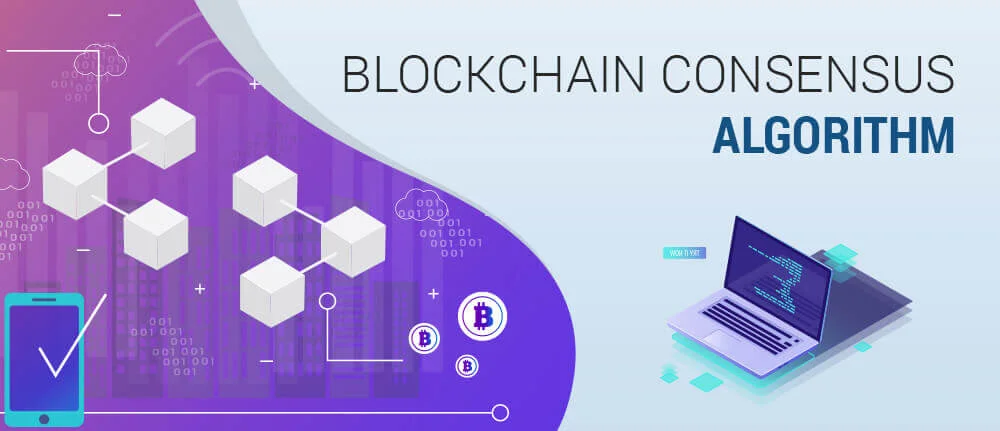How to Do Forecasting in Power BI (Steps & Accuracy Metrics)
Remember our last guide - Power BI forecasting? It revealed things that truly blocks accuracy, both structural and situational. Now it's time to take the next step. Knowing Power...
Listening is fun too.
Straighten your back and cherish with coffee - PLAY !

There are so many innovative technologies that made a vibrating impact in the digital world and Blockchain is being one of them. It is of no surprise that Blockchain has gained a spectacular traction in the market and impelled many blockchain software development companies to adopt in the development process. In this blog, we are going to discuss about Blockchain Consensus Algorithm: Proof of Stake Vs Proof of Work.
A consensus algorithm is a process used to achieve agreement on a single data which are designed for creating reliability in a network involving multiple nodes. In view of many Blockchain Consulting companies, it is a helpful algorithm for solving the issues in distributed computing and Multi-agent systems.
There are multiple kinds of consensus algorithms in Blockchain Technology which currently exists. Let’s know the difference between two of them Proof of Stake and Proof of Work.
Proof of Stake (PoS) is a mining algorithm that is based on the stake of the miner in the given ecosystem unlike arithmetic difficult puzzle in Proof of Work (PoW). That means, who writes the next block is decided based on how large the stake of a person / miner holds (i.e. how many coins or tokens does it hold).
For example,
Miner 1 – stakes 50 coins (bitcoin or any other)
Miner 2 – stakes 25 coins
Miner 3 – stakes 10 coins
Miner 4 – stakes 75 coins
Miner 4 would be given the opportunity to write and validate the next block. Miner 4 receives transaction fees unlike block reward in Proof of Work (PoW).
This does not require high computing power to reach a consensus and thus energy saving is very high and thus the solutions are energy efficient.
Proof of Work is a consensus algorithm that decides which node writes the new block from the given network. Proof of Work is followed by Bitcoin and Ethereum both with minor variation. With PoW, each minor or node competes with each other and gets rewarded at the end. Each node/miner is given a common mathematical puzzle or function to solve. The mathematical puzzle is normally complex and takes time to solve the same. Whichever miner solves the puzzle, gets an opportunity to write the new block to the chain.
A Mathematical puzzle is normally a puzzle that requires a lot of computational energy to solve the same. The answer to the PoW problem or mathematical equation is called a hash . Let us understand in the above diagram.
We have a set of new transactions to add to chain. In the current system, we have three nodes (miner) – A, B, and C. Network server sends mathematical puzzle to all three. The mathematical puzzle is solved by all three miners and the response is sent to Network server. Network server finds that miner B has solved the puzzle correctly and thus Miner B writes and confirms the transaction entry to the chain.
Find a number n such that its hash value of n appended to X gives a HASH that starts with 0.
X = “block”;
Hash(X) = Hash(block) = 496aca80e4d8f29fb8e8cd816c3afb48d3f103970b3a2ee1600c08ca67326dee
Hash(X1) = Hash(block1) = 9a59c5f8229aab55e9f855173ef94485aab8497eea0588f365c871d6d0561722
Hash(X2) = Hash(block2) = 6d0b07ee773591f2a1b492d3ca65afdefc90e1cadfcc542a74048bb0ae7daa27
Hash(X4) = Hash(block4) = 215008ba416eb06b8cfd53814660a43255e4ccc8703080af501ea0eaf7b7fdea
Result n is 4. Miner sends 4 to Network server and the Network server validates the result. If correct, miner writers and confirms the block.
PoW requires hashing millions of values every minute to get the desired result. This consumes a lot of energy and power. Bitcoin miners use specific chips designed specifically for hashing. The current hash rate of bitcoin is around 20 hash per second i.e. Approximately 20 billion hashes per second.
Due to specific hardware requirements, most of the miners are currently based in China as it offers high-speed chips that are required for good mining.

Remember our last guide - Power BI forecasting? It revealed things that truly blocks accuracy, both structural and situational. Now it's time to take the next step. Knowing Power...

It's amazing to see how Data teams today are racing ahead - moving from traditional warehouses to cloud-native platforms, lakehouses, and real-time architectures. But in this rush,...

Think about the last time CTOs spent most of their time fixing old systems. Updates were slow, servers were expensive, and adding new features took time. Now, things have changed....